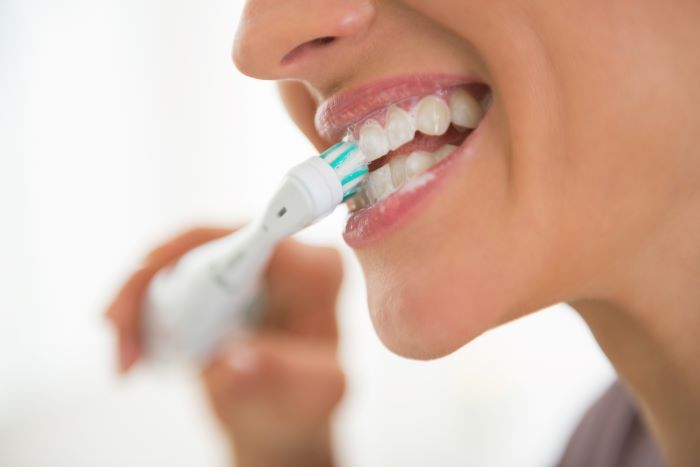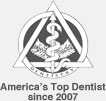How to Keep Your Gums Healthy

Gum disease, also referred to a periodontal disease, occurs when bacteria within plaque accumulates along the teeth and gums. Plaque is a film void of color that grows throughout the mouth. If gum disease is not treated, the resulting inflammation can lead to the deterioration of the gums and supportive bone. The gums might recede, and it is even possible to lose teeth. Furthermore, gum disease appears to be tied to additional diseases such as heart disease and diabetes. Let’s take a look at what you can do to prevent gum disease.
Rinse With Mouthwash
Swish with mouthwash at least once per day. The consistent use of a proven mouthwash really will decrease plaque and knock away those leftover bits of food floss and toothbrush bristles did not clean. Give your mouth a thorough rinse and it will reduce upwards of 20 percent of plaque.
Understand Your Risk Level
Simply being aware of one’s heightened risk for gum disease can inspire a course of preventative action. Everything from smoking to genetics, age, and diet impact your risk for gum disease. If you are at high risk, discuss the matter with your dentist or prosthodontist.
Floss Several Times Each Day
Flossing at least once per day assists in the elimination of food and plaque in between your teeth and across the gum line. Keep in mind your toothbrush can only reach so far. You need to floss to clean the portions of the gum line the toothbrush can’t reach.
Brush Your Teeth
It is especially important to brush after eating. This thorough cleaning helps eliminate food debris along with plaque stuck between the teeth and the gums. You should also brush your tongue. If you feel as though you will gag when brushing the middle or back portion of your tongue, use a tongue scraper for a comprehensive clean. Cleaning the tongue is important as it presents a space for bacteria to accumulate and eventually sabotage the gums. All in all, each brushing session should last for at least two minutes. Be sure to use a fluoridated toothpaste to remineralize your teeth and promote gum health.
Visit With a Periodontist
A periodontist should perform a yearly comprehensive periodontal evaluation. This evaluation examines the teeth, gums, level of plaque, bone structure, bite and additional risk factors for gum disease. In some cases, identifying the initial signs of gum disease makes it significantly easier to protect the gums in the years to come.
Improve Your Diet
Consume a diet of healthy foods. Try to avoid sugary and starchy items as they will increase the plaque level on your teeth. Boost your intake of foods with gum and teeth-friendly vitamin C and vitamin A. Once your diet improves, your chances of gum disease will become that much slimmer.
Eliminate Tobacco
Tobacco is terrible for oral health. Stop consuming cigarettes, smokeless tobacco and other forms of tobacco as they are a common contributor to gum disease, oral cancer, and other oral health problems.
Correct all Dental Restoration Problems
If your dental restorations are flawed in any way, if your teeth grind at night or if you have crowded teeth, meet with the dentist or prosthodontist right away. An oral health professional’s correction of these flaws will keep your mouth in tip-top shape and ultimately help prevent gum disease.
Ask Questions of Your Dentist or Prosthodontist
Discuss gum disease prevention strategies with your dentist or prosthodontist and other oral health professionals. Your dentist or prosthodontist will have some valuable insight that helps you maintain healthy teeth and gums. Do not hesitate to ask the dentist or prosthodontist to create a fully personalized oral home health care program designed to help prevent gum disease. Find out what the dentist or prosthodontist specifically thinks of your gum health. If you have a child, make sure he or she is examined for gum disease as well.
Time is of the Essence
If you notice any of the common warning signs of gum disease, get professional assistance right away. Set an appointment with the dentist or Bellevue prosthodontist as soon as you notice any of the common indicators of gum disease such as tender gums, swollen gums, red gums, blood when flossing or brushing, gum recession, halitosis or teeth that separate.
Store Your Toothbrush in a Manner That Prevents Germs
Position your toothbrush upright. Storing your toothbrush in this manner without a cover or an enclosed container limits germ exposure. Keep the environment dry as opposed to moist so germs cannot grow. If you store several toothbrushes by one another, be sure to keep them completely separated so germs are not allowed to move from one brush to another and so on.
Visit With the Dentist or Prosthodontist at Least Twice per Year
Meet with your dentist or prosthodontist every six months for a full gum and teeth evaluation. Our prosthodontist will provide additional advice for fending off gum disease beyond that offered in this article. A thorough cleaning performed every six months will go a long way in preventing gum disease and other oral health problems.
Contact the professionals at Washington State Prosthodontics to find out more!

 (425) 549-4649
(425) 549-4649







